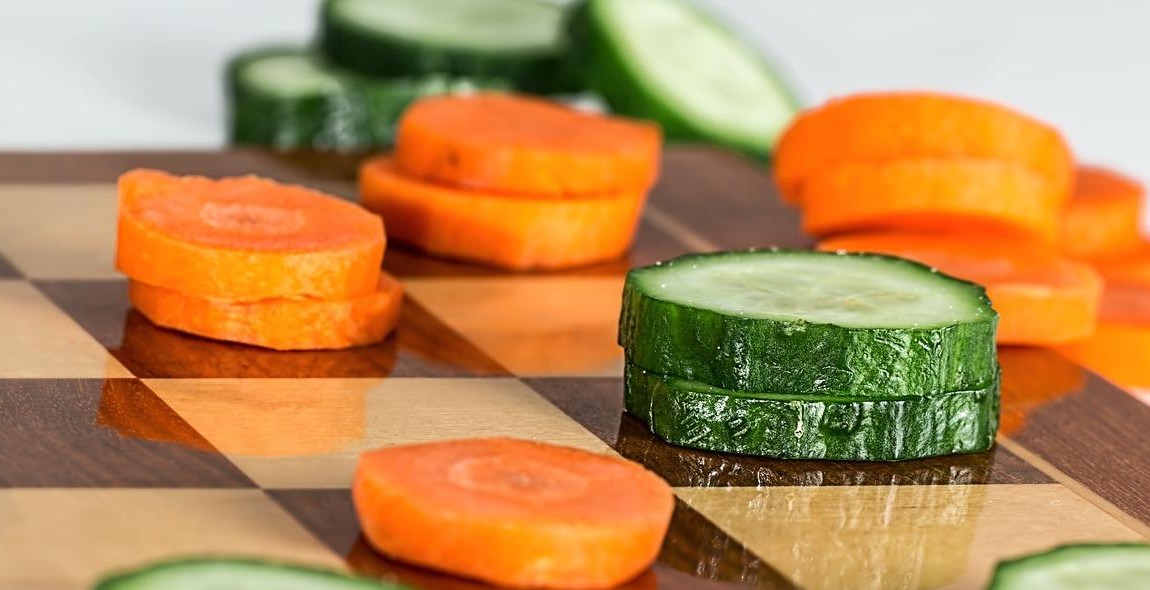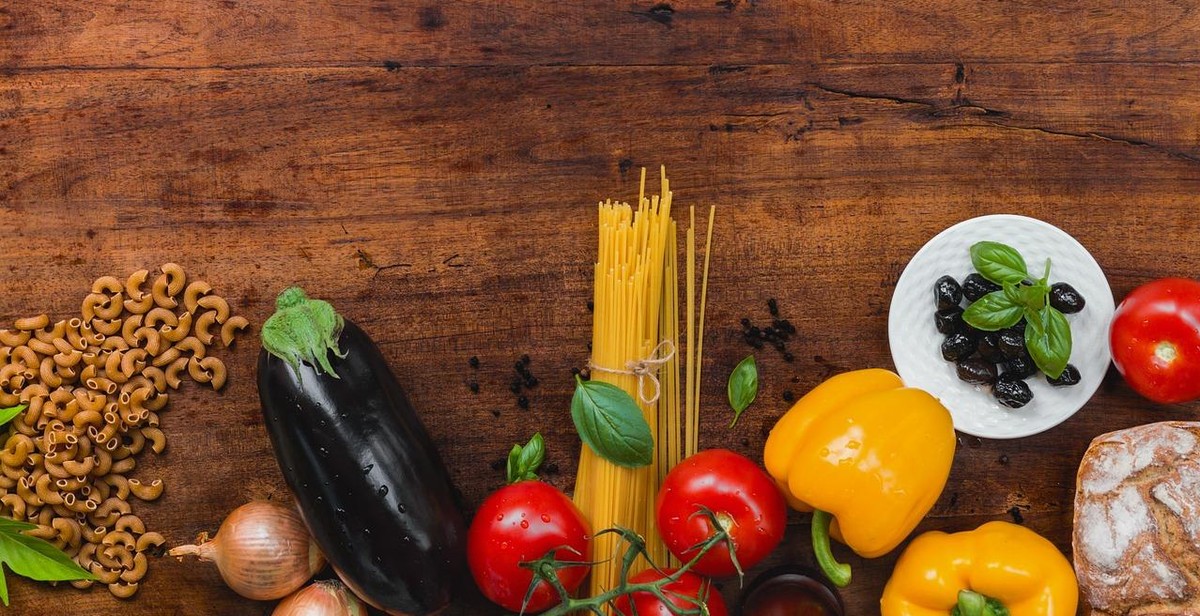Introduction
As a professional article writer and content creator, I have had the opportunity to explore different topics and niches over the years. However, one area that has always been close to my heart is nutrition and healthy eating. I have always been passionate about eating healthy and ensuring that my meals are well balanced and nutritious.
My Personal Journey with Meal Planning
Meal planning has been an integral part of my healthy eating journey. I realized early on that without proper planning, it was easy to fall back into old habits of eating unhealthy foods. I also found that meal planning helped me to save time and money, as well as reduce food waste.
Over the years, I have experimented with different meal planning strategies and have come up with a system that works for me. In this article, I will be sharing my personal experience and some of the best nutrition guidelines and recipe ideas for planning a healthy meal. Whether you are a beginner or a seasoned pro, this article will provide you with valuable insights and actionable tips that you can use to take your meal planning to the next level.
So, let’s dive in and discover how to plan a healthy meal that is not only delicious but also packed with essential nutrients that your body needs to thrive.

Nutrition Guidelines for Healthy Meal Planning
Planning healthy meals can be a daunting task, especially if you’re not sure where to start. However, with a little bit of knowledge and some planning, you can create meals that are not only delicious but also nutritious. Here are some nutrition guidelines to help you plan healthy meals:
Understanding Macronutrients
Macronutrients are the three main nutrients that our bodies need in large amounts: carbohydrates, proteins, and fats. Each macronutrient plays a different role in our bodies and is essential for maintaining good health.
- Carbohydrates: Carbohydrates are the main source of energy for our bodies. Choose complex carbohydrates such as whole grains, fruits, and vegetables, which provide fiber, vitamins, and minerals.
- Proteins: Proteins are essential for building and repairing tissues in our bodies. Choose lean protein sources such as chicken, fish, beans, and tofu.
- Fats: Fats provide energy and help our bodies absorb vitamins. Choose healthy fats such as olive oil, nuts, and avocados.
Portion Control and Serving Sizes
Portion control is essential for maintaining a healthy weight. Use a food scale or measuring cups to ensure that you are eating the correct serving sizes.
Here are some general guidelines for serving sizes:
| Food Group | Serving Size |
|---|---|
| Grains | 1/2 cup cooked |
| Vegetables | 1 cup raw or 1/2 cup cooked |
| Fruits | 1 medium piece or 1/2 cup chopped |
| Protein | 3 ounces cooked |
| Dairy | 1 cup milk or yogurt |
Incorporating Fruits and Vegetables
Fruits and vegetables are essential for good health. They are packed with vitamins, minerals, and fiber. Aim for at least 5 servings of fruits and vegetables per day.
Here are some tips for incorporating more fruits and vegetables into your meals:
- Add fruits to your breakfast cereal or oatmeal.
- Include a side salad or vegetable with your lunch and dinner.
- Snack on fresh fruits and vegetables throughout the day.
Choosing Whole Grains and Lean Proteins
Whole grains and lean proteins are important for maintaining good health. They provide essential nutrients and help to keep you feeling full and satisfied.
Here are some examples of whole grains and lean proteins:
- Whole grains: brown rice, quinoa, whole wheat pasta, and oatmeal.
- Lean proteins: chicken, fish, beans, and tofu.
Healthy Fats and Oils
Healthy fats and oils are essential for good health. They provide energy and help our bodies absorb vitamins. However, it’s important to choose the right types of fats and oils.
Here are some examples of healthy fats and oils:
- Olive oil
- Nuts and seeds
- Avocado
By following these nutrition guidelines, you can create healthy meals that are both delicious and nutritious.

Meal Planning Tips and Tricks
Meal planning is an essential part of maintaining a healthy diet. Planning ahead allows you to make smart food choices, save time, and stay on track with your nutrition goals. Here are some tips and tricks to help you create a healthy meal plan:
Creating a Meal Plan
Start by making a list of your favorite healthy foods and meals. Use this list to create a weekly or monthly meal plan. Be sure to include a variety of foods from all food groups, including fruits, vegetables, whole grains, lean proteins, and healthy fats.
When creating your meal plan, consider your schedule and plan meals accordingly. If you know you will have a busy day, plan for a quick and easy meal, such as a salad or stir-fry. If you have more time, plan for a more elaborate meal that requires more prep and cooking time.
Prepping Ingredients and Meals Ahead of Time
Prepping ingredients and meals ahead of time can save you time and make healthy eating easier. Consider prepping ingredients for the week on a Sunday, such as chopping vegetables or marinating proteins. You can also cook meals in advance and store them in the fridge or freezer for later in the week.
Invest in some quality food storage containers to help keep your prepped meals fresh and organized. Mason jars are great for storing salads, while glass containers with snap-on lids are perfect for storing soups and stews.
Making Healthy Substitutions
When planning your meals, try to make healthy substitutions to traditional recipes. For example, swap out white rice for brown rice or quinoa, or use Greek yogurt instead of sour cream in recipes. These small changes can make a big difference in the overall nutrition of your meals.
You can also experiment with using different herbs and spices to add flavor to your meals without adding extra calories or sodium. Try using fresh herbs like basil, cilantro, or parsley, or spices like cumin, paprika, or turmeric.
Trying New Recipes and Flavors
Don’t be afraid to try new recipes and flavors when planning your meals. Experimenting with new ingredients and cuisines can help keep your meals interesting and prevent boredom with your diet.
There are many resources available for finding healthy and delicious recipes, including cookbooks, food blogs, and recipe websites. Consider trying a new recipe once a week to keep things fresh and exciting.
In conclusion,
Meal planning doesn’t have to be complicated or time-consuming. By following these tips and tricks, you can create a healthy meal plan that fits your lifestyle and nutrition goals. Remember to be flexible and make adjustments as needed to ensure that your meal plan works for you.

Healthy Meal Recipe Ideas
Breakfast:
Start your day with a healthy breakfast that will keep you fueled for the morning. Here are some easy and nutritious breakfast ideas:
- Avocado Toast with Egg
- Oatmeal with Berries and Almonds
- Green Smoothie Bowl with Chia Seeds
- Yogurt Parfait with Granola and Fruit
Lunch:
Lunch is an important meal that can help you power through the rest of your day. Here are some healthy lunch ideas:
- Grilled Chicken Salad with Veggies and Quinoa
- Whole Wheat Wrap with Hummus, Veggies and Turkey
- Vegetable Stir Fry with Tofu and Brown Rice
- Black Bean and Sweet Potato Burrito Bowl
Dinner:
Dinner should be a balanced meal that includes protein, vegetables and healthy carbohydrates. Here are some healthy dinner ideas:
- Baked Salmon with Roasted Vegetables
- Grilled Chicken with Sweet Potato Mash and Green Beans
- Veggie Stir Fry with Brown Rice and Tofu
- Spaghetti Squash with Turkey Meatballs and Marinara Sauce
Snacks:
Healthy snacks can help keep you satisfied between meals and prevent overeating. Here are some healthy snack ideas:
- Apple Slices with Peanut Butter
- Carrots and Hummus
- Trail Mix with Nuts and Dried Fruit
- Greek Yogurt with Berries and Granola
Desserts:
You can still enjoy a sweet treat while sticking to a healthy diet. Here are some healthy dessert ideas:
- Baked Apples with Cinnamon and Honey
- Dark Chocolate Covered Strawberries
- Fruit Salad with Yogurt and Honey
- Banana Oatmeal Cookies
